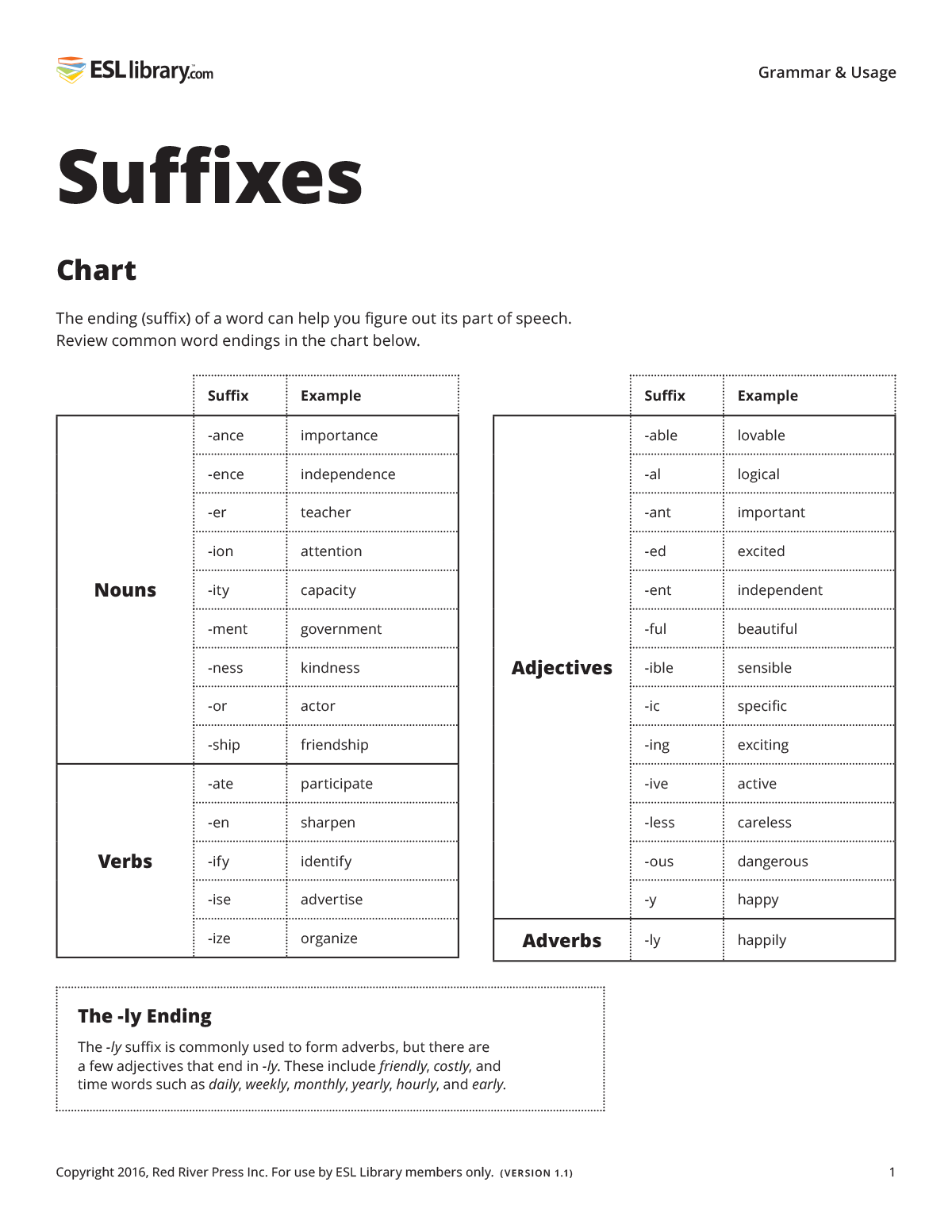
We all remember from school the incomprehensible symbols that teachers made us draw over words. We learned that the word can be disassembled by composition, and, it turns out, it has its own parts.
Sometimes these parts change to form a new word. Sometimes only one of its attributes is changed.
We will not paint for a long time, just this time we will talk about endings in English. The topic is very prosaic, because there are not so many inflections here. There are no case and generic endings in English, which greatly simplifies the study of the topic.
In grammar, the term ending is called inflection, which comes from the Latin «to connect».
-ing ending
Perhaps the most popular and quickly remembered ending, right? Even beginners to learn English will recognize this ending by its name. The ending is used in the continuous tenses to indicate the duration of an action.
So, for example, with the times present / past / future continuous, the auxiliary verb to be will also be used in a certain form.
- She was going to the university and listening to her favorite song.
- Chris and Sam are visiting Japan.
- Kids will be walking around the beach.
Note that not all verbs with an -ing ending will refer to one or another tense. This ending is also used in the form of the first participle and the gerund.
The gerund is a special verb form that in a sentence can be the subject, the object, or even the adverbal modifier.
- Fish – fishing,
- Drive – driving,
- read – reading, etc.
The study of the gerund is quite an exciting process, so we should devote a separate article to it.
Ending -s/-es/-ies
The first role of this ending is to form the verb form of the third person singular of Present Simple. Simply put, verbs that come after he/she/it pronouns, nouns that can be replaced by these pronouns, or personal names will end in -s/es.
|
—s |
-es |
-ies |
|
Vowel + у, other cases |
After, —x, —z, —o |
Consonant + y |
|
Play – he/she/it plays Obey – obeys Car – cars |
Hiss – hisses Go – goes Bush – bushes Fox – foxes |
Try – tries Cry – cries Cherry – cherries |
Tense ending -ed
Regular English verbs form the past form by adding the suffix/ending -ed. Words formed in this way are used in the tenses of the past and perfect groups, expressing an action in the past, or stating the fact of this action.
|
+ ed |
+ ied |
+ d |
|
Word ends with consonant |
Word ends with consonant + y |
Word ends with vowel |
|
Call – called Stop – stopped Cook – cooked |
Try – tried Cry – cried Identify – identified |
Bake – baked Guide – guided Poke – poked |
- I looked for children and saw them playing in the yard.
Participle endings
Such a category as participles differ in English from ordinary verbs. It is easy for an ignorant person to mistake one for the other and vice versa.
In English, participles are formed using the endings -ing and -ed, but in this case they have nothing to do with verbs of a particular tense.
In the first participle, the ending is added to the main verb form, giving the word the features of a subject or object.
- Read – reading
- She prefers reading
- My dad likes diving
The second participle is formed with the ending -ed, indicating the completion of the action by someone.
- The buns baked at that bakery are actually the best.
However, the second participle can also have the form of an irregular verb.
- The moment, caught in the camera, made me laughing so hard.
Inflection -‘s
This type of ending is used in the possessive case. That is, when we talk about belonging to someone of something. The possessive case answers the question «whose?» and in English is formed by adding an apostrophe and the ending -s to a noun or proper name.
However, the ending will only be added to singular words and plural exceptions that have their own word forms that do not fall under the general rules for plural formation in English.
- Alex’s car
- Dog’s ball
- Dogs’ balls (no case ending, only apostrophe and plural ending)
- Children’s books (proper plural with apostrophe and case ending)
Outcome
In fact, what we used to think of as an ending is often a suffix in English. Therefore, if you suddenly see this word in the rules, do not panic. It simply means that some of the rules have been adapted to better understand the material.
So, we can distinguish four types of English word endings:
1. Ending -s/-es
Plural, Present Simple
2. Ending -ed
Past Simple, Second Communion
3. Ending -ing
Gerund, first participle, long tenses
4. Inflection — ‘s
Possessive case
Are you teaching or studying English? As you know, vocabulary can be tricky because of the difficult spelling that isn’t always related to the pronunciation of words. Grammar can also be tough to learn. Teaching language learners about word endings can help them grasp the function of a word in a sentence. Understanding suffixes helps students with spelling (one suffix can be used in many words) and grammar (one suffix has a distinct part of speech such as noun, verb, adjective, or adverb).
When you combine word endings with sentence patterns, the English language makes sense in a whole new way. Students can guess at a word’s function, and therefore sentence position, even if they don’t yet know the meaning of the word. I’ve had success teaching word endings and sentence patterns to students in low-intermediate classes all the way to advanced. It’s especially useful for students who take tests like the TOEIC. Try presenting word endings and sentence patterns to your language learners, and expect to see some Aha! moments.
Grammar & Usage Resources – Suffixes
Practice
Word Endings (Suffixes)
Review the suffixes in the chart above. Reassure students that there are not that many common endings to remember for each part of speech (adjectives is the biggest category).
You could practice by writing the endings on the board and having students brainstorm other words with those endings (as a class or in groups). You could also cut up the words in the examples column, shuffle them up, and then have students quiz each other or work together to group them back into the four parts of speech.
Try introducing some word families so students can see how useful suffixes really are! Show the examples below and see if your students can come up with others.
- import (V), importance (N), important (Adj), importantly (Adv)
- succeed (V), success (N), successful (Adj), successfully (Adv)
- organize (V), organization (N), organized (Adj)
- act (V), actor/actress/action (N), active (Adj), actively (Adv)
For more fun practice activities, see our post on Prefixes and adapt those activities to suffixes.
Note on -ly
Make sure you remind students that while -ly is usually an adverb ending, there are a few -ly adjectives (friendly, costly, daily, weekly, monthly, yearly, hourly, early). They can either memorize these exceptions or learn the adjective and adverb sentence patterns so that they know the part of speech for any -ly word.
Related Resources
- Suffixes Chart & Worksheet
- Suffixes Flashcards
- Parts of Speech
- How to Write a Simple Sentence
- English Sentence Patterns
- Common Words Ending in -ance & -ence
- Prefixes
- Prefixes Chart & Worksheet
- Prefixes Flashcards
Endings and their grammatical meaning
1. Ending -s
We use -s with verbs (3rd person singular – Simple Present) and with nouns (plural).
Spelling Rules when adding -s
2. Ending -ing
We use -ing with Progressive tenses and with the Gerund.
Spelling Rules when adding -ing
3. Ending -ed
We use -ed with regular verbs in Simple Past.
Spelling Rules when adding -ed
4. Endings -er and -est
We use -er and -est with comparatives and superlatives of adjectives.
Spelling Rules when adding -er/-est
The spelling and pronunciation of words in English do not always correspond. For example, the “s” in said sounds different than the “s” in sugar. Sometimes, the pronunciation of a word may seem illogical, but in other cases, such as word stress, there are certain rules or patterns that can help English language learners more quickly identify the proper pronunciation of words. Certain word endings in English also have simple pronunciation rules.
Unlike certain languages, English has grammatical endings that convey important information such as number (The packages have arrived.), possession (Take one of Tom’s.), contractions (She’s a nice person.), and tense (He writes well.). Therefore, it is important that word endings like these are clearly and correctly pronounced. In the sections that follow, the rules and pronunciation patterns of two grammatical endings, -s and -ed, will be discussed. Before getting started, check out this quick explanation of voiced and voiceless sounds.

